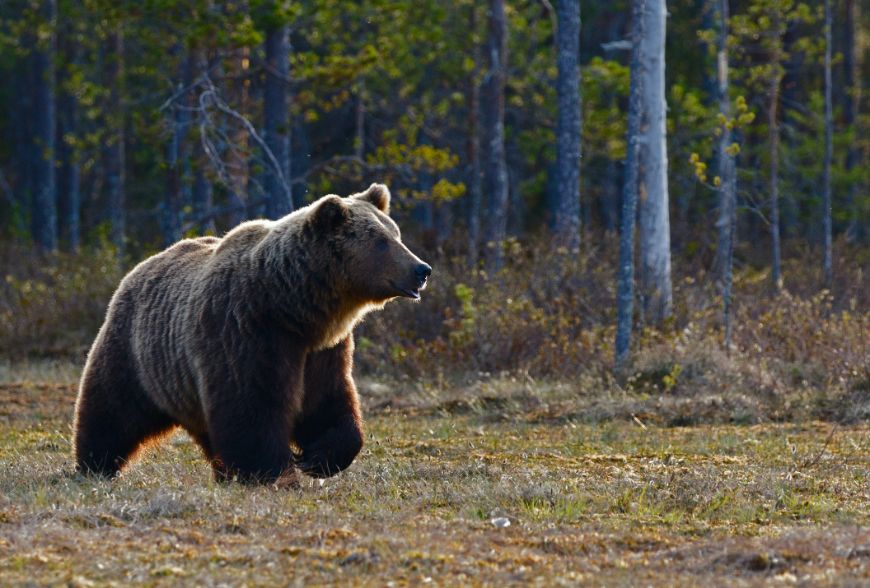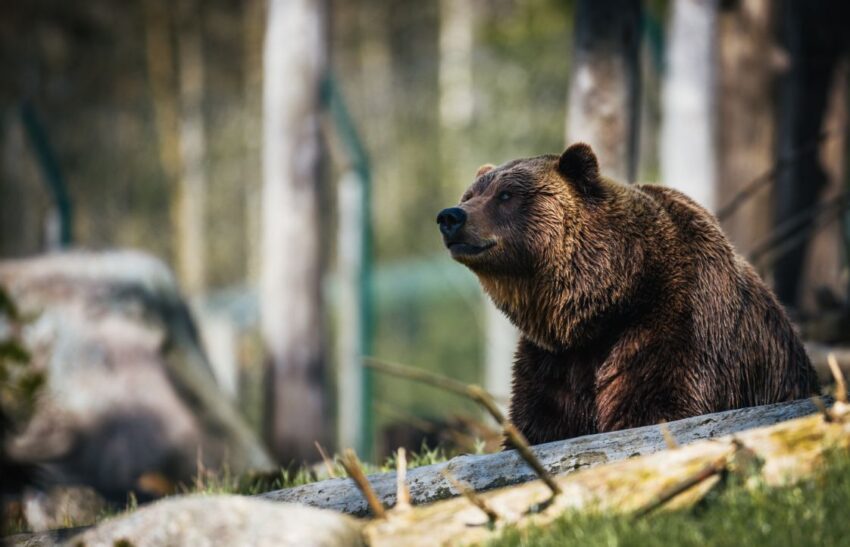Polar bears, black bears, and grizzlies can all run more quickly than the average person. According to the National Wildlife Federation, the brown bear, also known as a grizzly bear, has the fastest forelegs, reaching speeds of up to 35 mph.
Therefore, despite the fact that these magnificent bears appear to be moving slowly as they amble through the forest, a creature capable of running faster than even an Olympic sprinter can be found underneath all that fur and strength. Continue reading for more details if grizzly bears are of interest to you.
Grizzly Bear Facts
Grizzly bears, which are native to North America and Canada, once roamed the US, Europe, Scandinavia, Asia, and Russia. Although centuries of game hunting have severely reduced their populations, they are still present in Washington, Idaho, Wyoming, and Alaska in the US’s north. Although they are hunted there as a big game, they are also fairly common in Western Canada.
Although they are frequently mistaken for being a separate species, grizzlies are actually subspecies of the brown bear. Due to the differences in the two bears’ coat colors, it is also common for grizzlies to be mistaken for black bears.
Grizzlies and black bears both have a variety of coat colors, from tan to black. The ears are the most straightforward place to distinguish between a black bear and a grizzly bear. The ears of grizzlies are small and rounded, while those of black bears point upward.
Male grizzly bears can be as tall as 8ft (2.4m) standing on their hind legs and can weigh as much as 1700 pounds (771kg). That is greater than a grand piano! Female grizzly bears are approximately half the size of males, weighing around 800 pounds (363kg) and growing to 5 or 6 feet tall (1.5m – 1.8m).
They have broad, flat paws that provide them with good traction and keep them from collapsing into deep snowdrifts when they are in snowy environments. This physical adaptation helps grizzly bears survive and hunt because they frequently inhabit Arctic regions.
How Far Can A Grizzly Bear Run?
The National Park Service’s excellent article claims that a brown bear can run faster than any horse and has the endurance to keep running. Ponies that have spent the winter outside are frequently prey for grizzly bears in the spring because they may be able to catch them on the vast, open plains.
In the same 1937 bulletin, research on a female brown bear and her cubs that had just emerged from hibernation was published. The mother lost all sight of her cubs as she pursued a passing car for two miles (three kilometers) at a speed of 27 mph (43 kph).
Grizzly bears have a top speed of 30 mph (48 kph), which allows them to cover 100 yards (91 m) in eight to nine seconds.
Why Can Bears Run So Quickly?
As omnivores, bears consume both plants and animals. The percentage of plants in their diet varies depending on breed, from 60% to 90%. They must be swift and shrewd in order to catch the meat on which they also depend.

Bears typically hunt for fish, rodents, and animals with hooves like moose, elk, caribou, and deer. As they are slower and more vulnerable, they are especially effective against young and injured animals.
Bears may appear soft and chubby, but they actually have some pretty amazing muscles hidden beneath all that fur. Unexpectedly, they resemble a human bodybuilder when the skin is removed.
These muscles grow as a result of a lifetime spent hunting and prowling through the woods. An additional benefit of a bear’s claws is that they are particularly good at climbing trees and gaining traction on rocky ground.
Can You Outrun A Grizzly Bear?
Usain Bolt, the fastest sprinter in the world, was surprisingly unable to outrun a bear at his top speed. At his current rate, which tops out at an average speed of 25 mph (40 kph), Usain Bolt could outrun an Asiatic black bear or perhaps even a sluggish polar bear.
Even so, the line graphs depicting his frantic sprint show that, like any other human, he can only sustain his top speed for one to two seconds at most. According to several 1930s records discovered in Yellowstone National Park, a bear can sustain speeds of 25–28 mph (40–45 kph) for two miles or three kilometers.
The average person would obviously be unable to keep up with, much less outrun, a grizzly at a slow 15 mph (24 kph). Fortunately, most bear species would rather avoid humans than hunt them, just like some other animals do.
They only engage in combat in order to defend their territory, food, and young. However, with the proper gear, a person can outpace a bear in terms of distance. When pursuing or hunting a bear, a human could drive a car quickly, exhaust the animal, and then capture it.
In contrast, a person would be unable to outrun a bear if they were being pursued. Never attempt to race a bear because bears excel at sprinting while humans excel only at distance!
What Should You Do If You Encounter A Grizzly Bear?
If a grizzly bear approaches you in the forest:
- Don’t make eye contact with it
- Walk away slowly
- Don’t scream or run (as there’s no chance you’ll outrun the bear)
- Speak in a soft monotone voice to let the bear know that you’re human and not prey
- Slowly walk backward leaving a path for a bear to leave the area
Should a grizzly bear attack you:
- Leave your pack on and play dead
- Cover the back of your neck with your hands and spread your legs to make it harder for the bear to flip you over
- Try not to move until the bear leaves the area
- If it continues to attack, fight back as best you can, aiming for the bear’s face
Read More: Would You Kill A Bear With A Knife?

